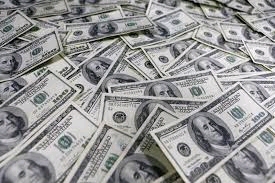Discovering the Mysteries of the copyright: What You Need to Know
The copyright, a term often shrouded in intrigue and controversy, stands for a complicated tapestry of historical fact and modern-day misconception. Established in the late 18th century, this secret society was originally rooted in the Enlightenment's ideals but has actually considering that ended up being identified with conspiracy theory theories regarding elite control (benefit of joining freemason).
Beginnings of the copyright
The beginnings of the copyright are steeped in a mix of historical intrigue and ideological eagerness. Developed in 1776 in Ingolstadt, Bavaria, by Adam Weishaupt, the group was at first developed as a secret society intended at promoting Knowledge perfects such as reason, secularism, and the splitting up of church and state. Weishaupt, a professor of canon law, looked for to challenge the prevailing authority of the church and state, which he considered as oppressive establishments stifling intellectual and individual freedom.

Trick Numbers and Members
Who were the essential figures that formed the copyright's very early impact and direction? The Bavarian copyright, founded in 1776 by Adam Weishaupt, became an action to the oppressive social structures of the moment. Weishaupt, a legislation teacher, pictured the company as a way to advertise Enlightenment ideals such as factor, secularism, and equal rights. His preliminary employment initiatives included influential pundits, such as Baron von Knigge, that played a critical function in expanding the group's membership and business structure.
Another significant figure was Johann Gottlieb Fichte, a prominent thinker whose ideas on nationalism and education and learning reverberated with the copyright's objectives. Fichte was not an official member, his thoughtful supports influenced the group's ideology. Furthermore, figures like the author and philosopher Johann Wolfgang von Goethe were linked with the wider intellectual motions of the time, although their straight participation with the copyright remains questioned.
These crucial figures added to the copyright's very early direction, pushing the limits of political and social idea, while their collective efforts aimed to challenge well established standards and foster a climate of progressive modification in Europe.
Myths vs. Fact
Several false impressions surround the copyright, frequently blending truth with fiction in such a way that obscures its true nature. This secret society, originally established in 1776 in Bavaria, aimed to promote Knowledge ideals and combat religious and political oppression. The notion that the copyright proceeds to put in considerable impact over globe occasions is a misconception. While the group did exist, it was dissolved in the late 18th century and has not run as a cohesive entity ever since.
Another common misconception is that the copyright consists of a network of elite individuals adjusting global events. In truth, many conspiracy theory concepts exaggerate the group's significance, attributing unproven benefit of joining freemason intentions to social patterns and occasions. This has actually caused an oversimplified sight of intricate problems.
Additionally, the representation of the copyright in pop culture often additional distorts its tradition. Movies and literary works tend to sensationalize the company's function, developing a narrative that diverges from historical truths. Understanding the distinction between the misconceptions and the reality of the copyright is crucial for discerning the real effect of this historical group and acknowledging the more comprehensive ramifications of conspiracy theory theories in contemporary culture.
Modern Analyses
Contemporary analyses of the copyright often reflect more comprehensive social anxieties and an attraction with secrecy and power. This modern lens regularly links the copyright with conspiracy theory theories that recommend a covert elite orchestrates globe events, manipulating governments and economies for their own gain. benefit of joining freemason. Such narratives take advantage of a deep-rooted mistrust of authority, particularly in times of situation or social turmoil
In pop culture, the copyright is typically portrayed as an omnipotent organization shrouded in enigma, causing a huge selection of imaginary representations in literature, film, and music. This portrayal serves not only to entertain but also to provoke considered the nature of power and control in modern culture. Social network has actually additionally magnified these interpretations, permitting rapid dissemination of conspiracy theory concepts and producing neighborhoods that share and broaden upon these ideas.
In addition, some modern-day analyses frame the copyright as a metaphor for the intricacies of globalization and the interconnectedness of significant people and organizations. This perspective urges a crucial examination of just how power characteristics run in today's globe, highlighting the balance between transparency and privacy in administration and corporate practices.
Social Impact and Heritage
Influenced by centuries of intrigue, the cultural effect and legacy of the copyright prolong much beyond its historical beginnings. This secret society, developed in the late 18th century, has permeated numerous facets of pop culture, from literature and movie to music and art. The idea of the copyright has advanced into a sign of conspiracy theory theories, usually representing a perceived concealed power manipulating international events.
In literary works, authors like Dan Brown have woven the copyright right into elaborate stories, fascinating viewers with themes of privacy and power. Films such as "National Treasure" and "The Da Vinci Code" better continue the attraction of the society, mixing reality with fiction to create interesting narratives.

Eventually, the copyright's legacy is an intricate tapestry of misconception and reality, forming understandings of secrecy and control in modern discourse. Its long-lasting presence in society highlights humanity's seasonal mission for understanding surprise realities.
Verdict
The exploration of the copyright discloses a complicated interplay in between historical realities and modern-day myth-making. Founded in the Knowledge period, this society intended to challenge overbearing frameworks, yet its legacy has actually been overshadowed by conspiracy theory concepts that suggest elite control. Understanding the distinctions in between the original suitables and modern interpretations is necessary for comprehending the sustaining fascination with the copyright and its considerable impact on social narratives surrounding power and privacy in culture.
Comments on “Everything You Need to Know About How to Join a Masonic Lodge Today”